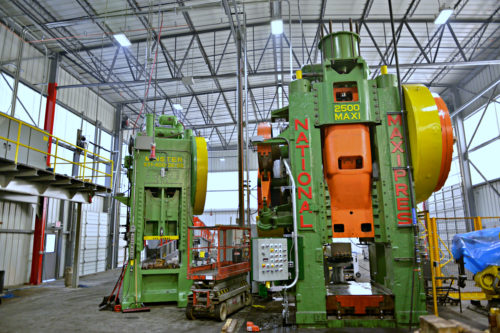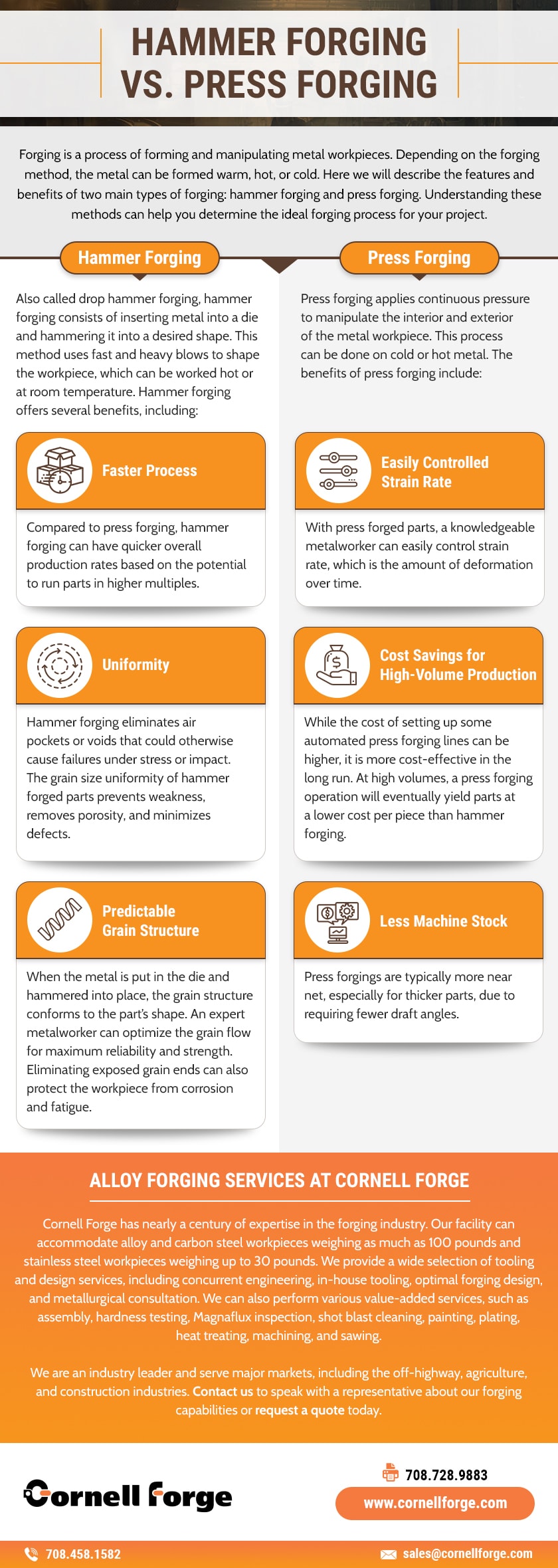Forging is a process of forming and manipulating metal workpieces. Depending on the forging method, the metal can be formed warm, hot, or cold. Here we will describe the features and benefits of two main types of forging: hammer forging and press forging. Understanding these methods can help you determine the ideal forging process for your project.
Hammer Forging
Also called drop hammer forging, hammer forging consists of inserting metal into a die and hammering it into a desired shape. This method uses fast and heavy blows to shape the workpiece, which can be worked hot or at room temperature. Hammer forging offers several benefits, including:
- Uniformity: Hammer forging eliminates air pockets or voids that could otherwise cause failures under stress or impact. The grain size uniformity of hammer forged parts prevents weakness, removes porosity, and minimizes defects.
- Predictable grain structure: When the metal is put in the die and hammered into place, the grain structure conforms to the part’s shape. An expert metalworker can optimize the grain flow for maximum reliability and strength. Eliminating exposed grain ends can also protect the workpiece from corrosion and fatigue.
- Faster process: Compared to press forging, hammer forging can have quicker overall production rates based on the potential to run parts in higher multiples.
Press Forging
Press forging applies continuous pressure to manipulate the interior and exterior of the metal workpiece. This process can be done on cold or hot metal. The benefits of press forging include:
- Cost savings for high-volume production: While the cost of setting up some automated press forging lines can be higher, it is more cost-effective in the long run. At high volumes, a press forging operation will eventually yield parts at a lower cost per piece than hammer forging.
- Less machine stock: Press forgings are typically more near net, especially for thicker parts, due to requiring fewer draft angles.
- Easily controlled strain rate: With press forged parts, a knowledgeable metalworker can easily control strain rate, which is the amount of deformation over time.
Alloy Forging Services at Cornell Forge
Cornell Forge has nearly a century of expertise in the forging industry. Our facility can accommodate alloy and carbon steel workpieces weighing as much as 100 pounds and stainless steel workpieces weighing up to 30 pounds. We provide a wide selection of tooling and design services, including concurrent engineering, in-house tooling, optimal forging design, and metallurgical consultation. We can also perform various value-added services, such as assembly, hardness testing, Magnaflux inspection, shot blast cleaning, painting, plating, heat treating, machining, and sawing.
We are an industry leader and serve major markets, including the off-highway, agriculture, and construction industries. Contact us to speak with a representative about our forging capabilities or request a quote today.




